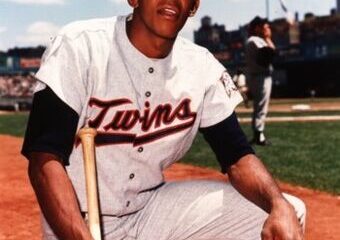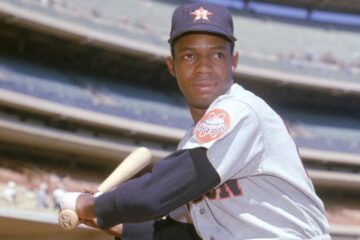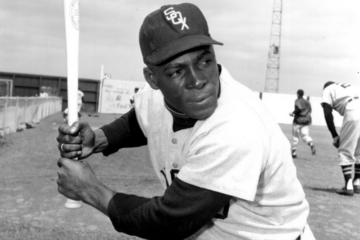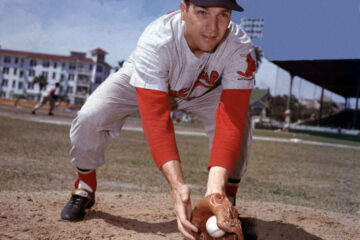The Hall of Fame Index: Who is the most valuable catcher of all-time?
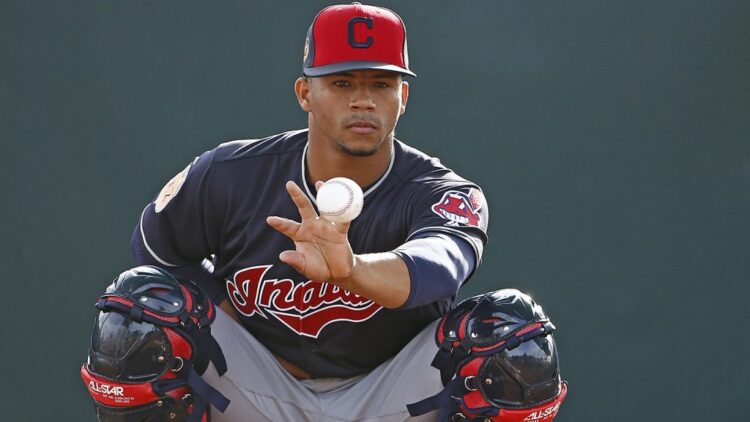
When we start ranking players at a specific position we are going to a place The Hall of Fame Index was never designed to do. So, we have to add a few layers on analysis to get to where we want to go. First, we have to define our terms. We are looking for the most dominant or valuable catcher of all-time. If we throw out the term greatest then we have to argue on somewhat subjective terms. Value has a mathematical connotation. Greatness is something we can throw down on at the sports bar (when we can go back).
So, we are looking at the top five catchers according to the index. This will eliminate some folks that some will argue should be there. Roy Campanella might have been there without the color barrier and Josh Gibson would certainly be there if we had reliable numbers and a handle on the difference between the level of play in the Negro Leagues and the big leagues at the time.
We will start with the index because the index can provide some evidence. In particular, people love to ask who was better when they were at their best. Peak value can tell a little. However, we will break down offensive and fielding data by career and peak as well. We will also include playoff performance and BWAR MVP points. Hopefully, when it is all said and done we can reach a consensus.
Career Value
| BWAR | FWAR | WS/5 | Total | |
| Johnny Bench | 75.2 | 74.8 | 71.2 | 221.2 |
| Gary Carter | 70.1 | 69.4 | 67.4 | 206.9 |
| Ivan Rodriguez | 68.7 | 69.2 | 67.6 | 205.5 |
| Yogi Berra | 59.5 | 63.7 | 75.0 | 198.2 |
| Mike Piazza | 59.6 | 63.7 | 64.8 | 188.1 |
These debates usually begin with the inevitable question of which guy you would want for one game, one season, or just whenever. That’s an imprecise question. Obviously, there are guys that have had terrific seasons that aren’t shown here. To ask about a single game is beyond silly. I’ll take the day that J.R. Towles drove in eight runs against the Cardinals. Who is J.R. Towles? Exactly. The fact is that in a fantasy draft environment, the catcher you pick would depend greatly on who else you pick. Are we stronger offensively or defensively? Is the pitching staff young or experienced? What environment are we playing in? Do other teams attempt to run much or not? These are all factors that would need to be determined independent of the numbers above.
So, we will not look at abstractions like that. We are simply asking the question of which of the above catchers was more valuable. Bench would seem to be the choice over the course of an entire career, but the question of who was more valuable during their peak is an important question. Peak value will answer that more directly, but we obviously can’t leave it there.
Peak Value
| BWAR | FWAR | WS/5 | Total | Index | |
| Bench | 60.0 | 60.4 | 54.6 | 175.0 | 396.2 |
| Carter | 61.2 | 59.0 | 52.4 | 172.6 | 379.5 |
| Piazza | 54.0 | 59.0 | 54.6 | 167.6 | 355.7 |
| Berra | 48.2 | 50.8 | 55.2 | 154.2 | 352.4 |
| Rodriguez | 50.7 | 50.2 | 43.0 | 143.9 | 349.4 |
When you see numbers as close as the peak value numbers it is more important to precisely define what we are looking at. BWAR and FWAR are usually very similar. They treat players in a run environment. Ten runs equal one win. We can estimate how many games a team should win by tallying up those wins, but as we know, the results don’t always follow those estimates. Great teams often outperform their expectations for one reason or another.
This becomes important when we look at win shares. Win shares are based on those actual wins. It also assumes everyone starts at zero where it is easily possible to have negative WAR. The two small differences combine to have a dramatic effect in peak value. The quality of the team those players played on makes a big difference when we look at smaller sample sizes.
What does all of this mumbo jumbo really mean? Notice that Berra had a bigger win share score in both career value and peak value. He played on a team that routinely won the pennant. It is fair to assume that the Yankees often outperformed their expected win totals. So, win shares would give him extra credit since it is based on wins. That would work in reverse for guys that didn’t play on good teams. Fortunately, none of the players above played on truly awful teams, but some of them played on average teams. Bench obviously has a narrow advantage in peak value, but we have to acknowledge some limitations when making this kind of analysis with a metric designed to measure Hall of Fame fitness.
Offensive Numbers
| OPS+ | Rbaser | OW% | wOBA | |
| Piazza | 143 | -29 | .669 | .390 |
| Bench | 126 | -2 | .627 | .362 |
| Berra | 125 | 12 | .631 | .370 |
| Carter | 115 | -16 | .581 | .342 |
| Rodriguez | 106 | -3 | .507 | .344 |
Let’s start with a simple question. Why are we using these fancy numbers and not the numbers most people are familiar with? If we were to use traditional numbers we would probably see that Mickey Cochrane was the best hitting catcher of all time. He had a higher batting average, on base average, and was nearly as good as Piazza in terms of slugging. Of course, the problem comes in the fact that those numbers have no context.
These numbers compare each player with the average player in their league. Based on those numbers, no one can deny that Piazza is the most valuable offensive catcher in the history of the sport. That’s over the course of a full career. When we break it down to their ten best seasons we see something different in some cases.
| OPS+ | Rbaser | OW% | wOBA | |
| Piazza | 154 | -20 | .701 | .407 |
| Bench | 130 | 3 | .636 | .367 |
| Berra | 129 | 6 | .645 | .375 |
| Carter | 127 | -4 | .625 | .359 |
| Rodriguez | 122 | 6 | .587 | .375 |
The order does not change when we move from career offense to peak offense, but the gap is definitely closed. Rodriguez looks much better in comparison and when you add in his obvious fielding reputation you could see why some would advocate for him as the most dominant catcher of all-time. The aforementioned Cochrane was not profiled here because he did not have the career longevity, but even with the fancy numbers he would have slid in comfortably behind Piazza on the offensive chart.
Yet, he isn’t here. This is because longevity and durability still matters. Fielding also matters. Not everyone here was a brilliant defender. Obviously, Piazza is a runaway favorite offensively, but winds up in the middle of the pack overall (among the five). That happened for a reason. Unfortunately, pitch framing has only been a thing in recent seasons. Piazza was supposedly a very good one. If these sources find a way to include that in their analysis, the overall view of Piazza as a player could change dramatically. However, we need to look at what we do have.
Fielding Numbers
| Rfield | DWAR | TZC | DWS/5 | |
| Rodriguez | 147 | 29.6 | 167 | 31.6 |
| Carter | 112 | 26.1 | 106 | 24.8 |
| Bench | 72 | 19.7 | 97 | 19.9 |
| Berra | 34 | 9.2 | 33 | 20.9 |
| Piazza | -63 | 1.5 | -41 | 12.0 |
All numbers have a context. We might be led to believe that Piazza was an awful defensive catcher. Keep in mind these numbers don’t include pitch framing. Also, if we were to extrapolate those Rfield numbers over the course of a full career we would see that he would be around five runs below average per season. That’s bad by Hall of Fame standards, but is decidedly not terrible when comparing it with everyone else.
We also haven’t looked at peak fielding. In some cases, guys completely fall apart offensively and defensively. Everyone loses the proverbial step. Piazza went from being an all-star catcher to being a bum nearly overnight. This is common for catchers that reach their early thirties. The peak defensive data would probably be more illuminating when asking the question of how good everyone was at their very best.
| Rfield | DWAR | TZC | DWS/5 | |
| Rodriguez | 110 | 18.3 | 112 | 16.1 |
| Carter | 109 | 22.1 | 116 | 18.6 |
| Bench | 75 | 17.4 | 80 | 15.7 |
| Berra | 37 | 9.3 | 30 | 15.5 |
| Piazza | -36 | 3.4 | -24 | 9.9 |
One could successfully argue that Carter was a more valuable peak defender than Rodriguez. Both played a long time, but Carter didn’t add a whole lot of value beyond the end of his ten year peak. It is one of the drawbacks of looking at overall numbers (particularly the counting kind). Since Carter was a better offensive player in his prime, it then becomes fairly obvious that he was a more valuable overall player in his prime than Rodriguez.
It also demonstrate the difference in Rodriguez’s career arc. The other four arguably either had more defensive value in those ten years or a similar amount when compared to average. In other words, outside of their peak they were either average or below average. Rodriguez added considerable defensive value outside of his peak. The normal phenomenon shows itself in Piazza. He wasn’t good, but he was considerably closer to average than he was in his overall numbers.
Playoff Numbers
| PA | SLASH | HR | Runs | RBI | |
| Berra | 295 | .274/.359/.452 | 12 | 41 | 39 |
| Bench | 188 | .266/.335/.527 | 10 | 27 | 20 |
| Rodriguez | 170 | .255/.314/.392 | 4 | 17 | 25 |
| Piazza | 133 | .242/.301/.458 | 6 | 14 | 15 |
| Carter | 128 | .280/.320/.466 | 4 | 11 | 21 |
Playoff or big game performance falls under a category normally referred to as intangibles. Everything can’t be measured and shouldn’t we include factors that can’t be? The problem comes in how much weight one gives to intangibles. Berra’s Yankees won more than anyone else. Can we say he had excellent leadership qualities? Sure, I suppose we could, but how does one even measure that? Saying so doesn’t mean Bench, Carter, Piazza, or Rodrguez didn’t have positive qualities of their own. All of them were on pennant winning teams and some won World Series titles. They just didn’t win as many as Berra.
None of these guys really distinguished themselves one way or the other. Bench had the highest OPS of the group and Berra obviously won the most titles as a player. Since catchers are so involved defensively, we can’t simply leave it at offensive numbers. The complaint is that arguing about intangibles is getting lost in the weeds. The tangibles comprise a much larger percentage of the overall record.
BWAR MVP Points
| Top 10 | Top 5 | MVP | PTS | |
| Carter | 1 | 7 | 1 | 48 |
| Bench | 4 | 3 | 1 | 37 |
| Berra | 3 | 4 | 0 | 29 |
| Piazza | 0 | 3 | 0 | 15 |
| Rodriguez | 3 | 1 | 0 | 14 |
When we saw how valuable Carter was during his prime defensively, we saw that he was perhaps the best two-way player during his prime. Bench is obviously a close second here, but he was marginally better when looking at the index. So, not every test produced the same results. These things happen that way more often than not. We ultimately try to reach a consensus when we see data that is divided.
If forced to choose I tend to side with the index. That gives the edge to Bench. He also had slightly more postseason success with his teams and individually. When you add that to the index it becomes a little more clear. Of course, there are points for all five guys, but hopefully the index makes the question a little more clear.


